I was stoked to see a class being taught at Harvard this summer inspired by A Burglar’s Guide to the City. Called “(Don’t) Steal this Painting: A Burglar’s Guide to the Museum,” the course is led by Matthew Battles. It’s only open to Harvard students, alas, but if that accurately describes you then give it a shot.
Tag: Museums
The Architecture of the Overlap
 [Image: Screen grab from Sir John Soane’s Museum].
[Image: Screen grab from Sir John Soane’s Museum].
One of my favorite museums, Sir John Soane’s Museum in London, has teamed up with ScanLAB Projects for a new, 3D introduction to the Soane’s collections.
 [Image: Screen grab from Sir John Soane’s Museum].
[Image: Screen grab from Sir John Soane’s Museum].
“We are using the latest in 3D technology,” the Museum explains, “to scan and digitize a wide selection of Museum rooms and objects—including Soane’s Model Room, and the ancient Egyptian sarcophagus of King Seti I.”
The opening animations alone—pulling viewers straight into the facade of the building, like a submarine passing impossibly through a luminous reef—are well worth the click.
 [Image: Screen grab from Sir John Soane’s Museum].
[Image: Screen grab from Sir John Soane’s Museum].
The museum’s interior walls become translucent screens through which the rest of Soane’s home is visible. Rooms shimmer beneath other rooms, with even deeper chambers visible behind them, golden, hive-like, lit from within. Like a camera built to capture only where things overlap.
In fact, I could watch entire, feature-length films shot this way: cutting through walls, dissecting cities, forming a great narrative clockwork of action ticking away in shining blocks of space. As if the future of cinema is already here, it’s just hidden—for now—in the guise of avant-garde architectural representation.
 [Image: Screen grab from Sir John Soane’s Museum].
[Image: Screen grab from Sir John Soane’s Museum].
ScanLAB’s work—such as in Rome, beneath the streets of London, or in strange new forms of portraiture—continues to have the remarkable effect of revealing every architectural space as actually existing in a state more like a cobweb.
Hallways become bridges crossing the black vacuum of space; individual rooms and galleries become unreal fogs of ornament and detail, hanging in a context of nothing.
It thus seems a perfect fit for a place as bewildering and over-stuffed as the Soane Museum, that coiling maze of archaeological artifacts and art historical cross-references, connected to itself through narrow stairways and convex mirrors.
Of course, this also begs the question of how architecture could be redesigned for maximizing the effects of this particular mode of visualization. What materials, what sequences, what placements of doors and walls would lend itself particularly well to 3-dimensional laser scanning?
The new site also includes high-res, downloadable images of the artifacts themselves—

 [Images: The sarcophagus of King Seti I; courtesy Sir John Soane’s Museum].
[Images: The sarcophagus of King Seti I; courtesy Sir John Soane’s Museum].
—including Seti I’s sarcophagus, as seen above.
Click through to the Soane Museum for more.
(Elsewhere: The Dream Life of Driverless Cars).
Archive Fever
 [Image: Photo by James DiLoreto/Smithsonian Institution, via the New York Times].
[Image: Photo by James DiLoreto/Smithsonian Institution, via the New York Times].
There was an interesting article in The Atlantic several months ago, written by Ed Yong, about the remains of as-yet undiscovered new species hiding away in the collections of natural history museums.
 [Image: Behind the scenes of the American Museum of Natural History, New York; Instagram by BLDGBLOG].
[Image: Behind the scenes of the American Museum of Natural History, New York; Instagram by BLDGBLOG].
Those species are, Yong suggests, just some of “the many secrets that are still locked within their drawers and dioramas,” secrets that will only be revealed and studied if we increase our attention on museum archives and stockrooms not as known quantities, but as potential resources of the altogether new and undocumented.
 [Image: Amongst the fish of the American Museum of Natural History, New York; Instagram by BLDGBLOG].
[Image: Amongst the fish of the American Museum of Natural History, New York; Instagram by BLDGBLOG].
I was reminded of this by a short piece in the New York Times last week, about the skull of “a previously unknown species of extinct dolphin” found “sitting in a drawer at the Smithsonian Museum of Natural History.” It is from a descendent of a South Asian river dolphin, and was found in Alaska in 1951.
“One of the great things about the Smithsonian,” researcher Alexandra T. Boersma explained to the New York Times, as if taking a cue from Yong’s article, “is that the collections are so vast. We were just walking around to see if anything was interesting. And then, wow!”
 [Image: Piscine preservation at the American Museum of Natural History, New York; Instagram by BLDGBLOG].
[Image: Piscine preservation at the American Museum of Natural History, New York; Instagram by BLDGBLOG].
Briefly, recall the instigating event in A.S. Byatt’s novel Possession. There, a researcher uncovers previously unknown letters written by a Victorian poet, folded up and stashed inside a book that “had been undisturbed for a very long time,” we read, “perhaps even since it had been laid to rest.”
Never before published—perhaps never before read by anyone other than their original author—these handwritten notes set off a long sequence of investigations and discoveries and, in the novel’s fictional world, help to partially rewrite British literary history.
Byatt’s archival fantasy—of unknown but magnificent things lying hidden in museums and libraries, in the very places that promised tidiness and knowledge, coherence and totality—is at least equally stimulating when applied to collections of all sorts, from Yong’s and Boersma’s natural history cabinets stuffed full of potential new species, even evidence of forgotten ecosystems, to collections of minerals, antiquities, architectural fragments, or street photographs.
Just one insufficiently described historic artifact, one misattributed drawing, one unpolished gemstone accidentally dropped into the wrong drawer, and off you go, struck by the fever of weaving the threads of the world back together again, one loose detail forcing the entire structure of everything you know to rearrange.
Time Capsules
There’s a great story by Ed Yong over at The Atlantic about the fact that, as he explained on Twitter, “hundreds of undiscovered species lurk in the drawers of museums.” Natural history collections, Yong writes, are actually “time capsules that contain records of past ecosystems that are rapidly changing or disappearing. They are archives that provide clues about raging epidemics, environmental pollution, and hidden extinctions. And they are full of unknown species—like the sacred crocodile.” Check it out. If you like natural history museums as much as I do, meanwhile, you might also enjoy Richard Fortey’s book, Dry Storeroom No. 1: The Secret Life of the Natural History Museum.
A Cenotaph for Tailings
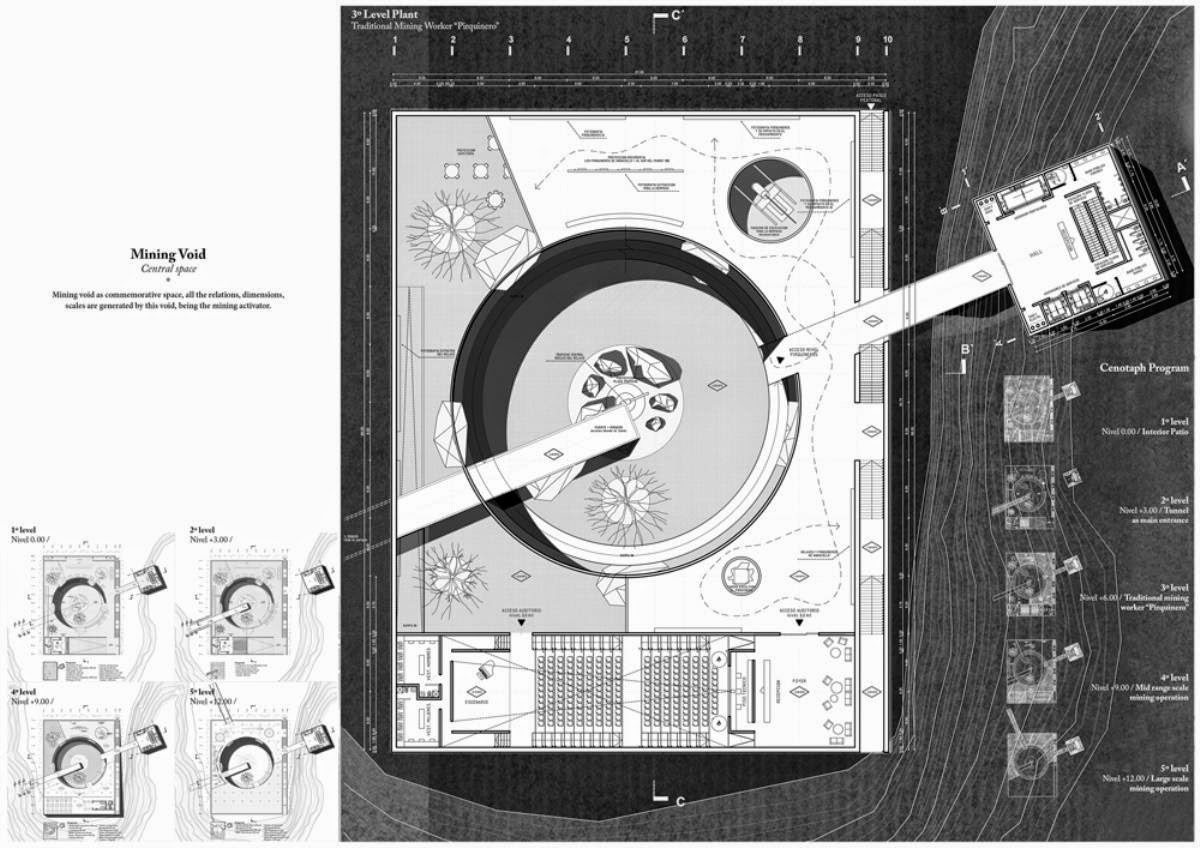 [Image: From “Mining Cenotaph” by Alexis Quinteros Salazar; courtesy of the RIBA President’s Medals].
[Image: From “Mining Cenotaph” by Alexis Quinteros Salazar; courtesy of the RIBA President’s Medals].
Here’s another project from the RIBA President’s Medals, this one by Alexis Quinteros Salazar, a student at the University of Chile in Santiago.
Called “Mining Cenotaph,” it imagines an “occupation” of the tailings piles that have become a toxic urban landmark and a spatial reminder of the region’s economic exploitation.
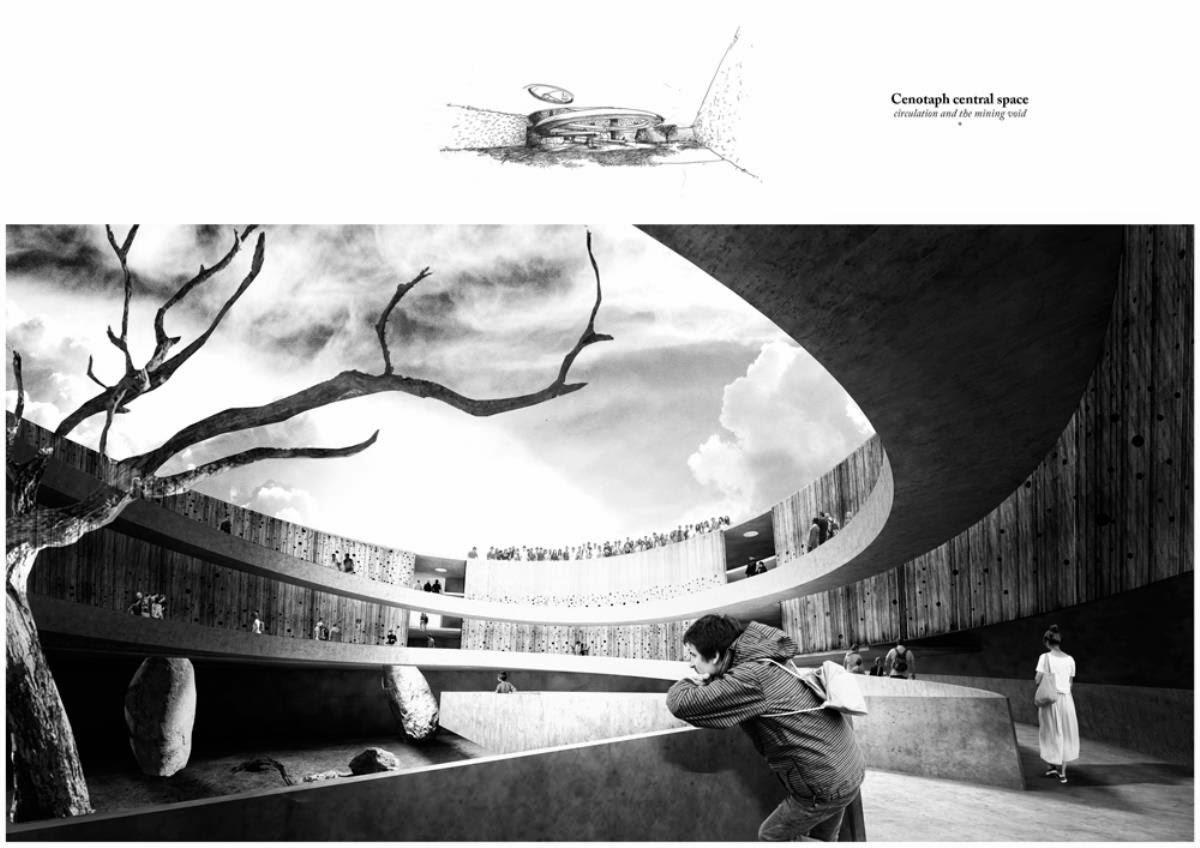 [Image: From “Mining Cenotaph” by Alexis Quinteros Salazar; courtesy of the RIBA President’s Medals].
[Image: From “Mining Cenotaph” by Alexis Quinteros Salazar; courtesy of the RIBA President’s Medals].
A museum would be carved into the tailings; in Salazar’s words, this would be a “building that captures the history and symbolism behind mining, enhancing and revitalizing a memory that is currently disaggregated and ignored and has a very high touristic potential.”
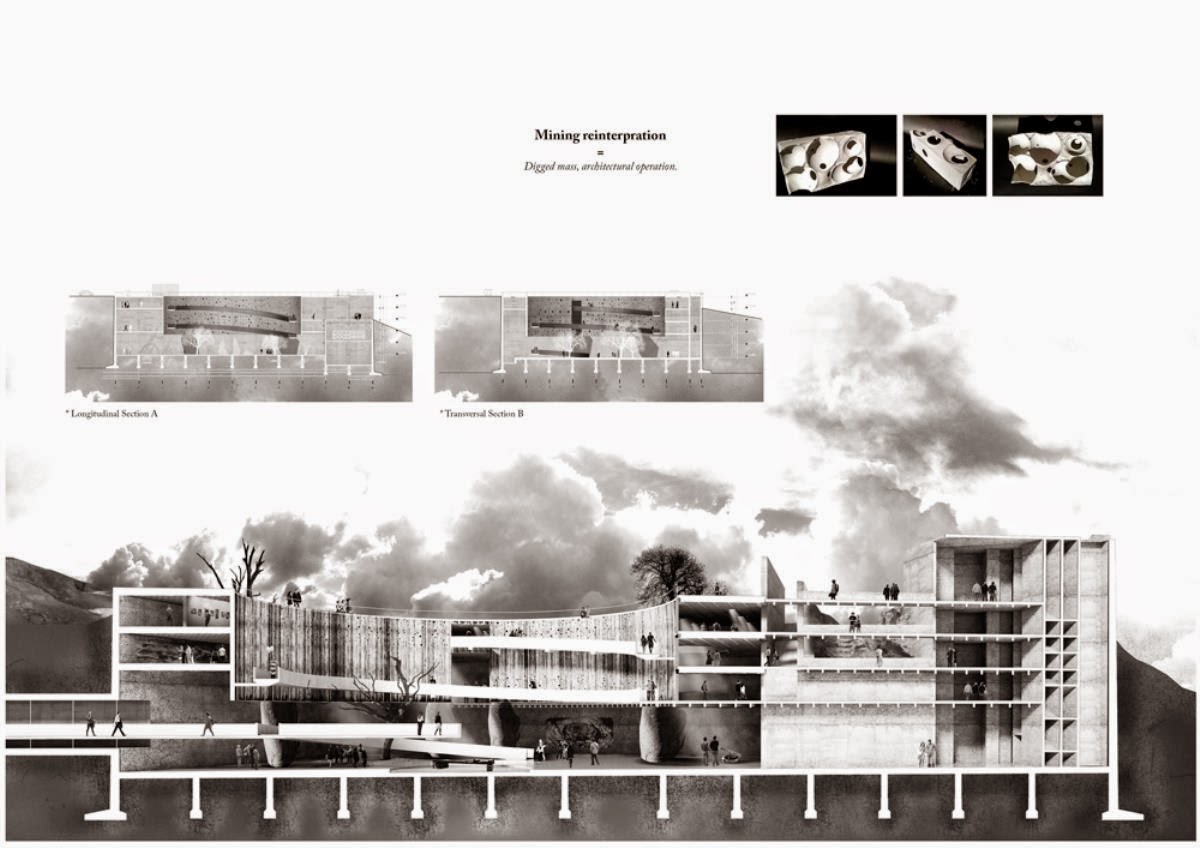 [Image: From “Mining Cenotaph” by Alexis Quinteros Salazar; courtesy of the RIBA President’s Medals].
[Image: From “Mining Cenotaph” by Alexis Quinteros Salazar; courtesy of the RIBA President’s Medals].
In an architectural context such as this, the use of the word “cenotaph” is a pretty clear reference to Étienne-Louis Boullée’s classic speculative project, the “Cenotaph for Newton.” Over multiple generations, that has become something of a prime mover in the history of experimental architectural design.
Punctured walls and ceilings bring light into the interior—
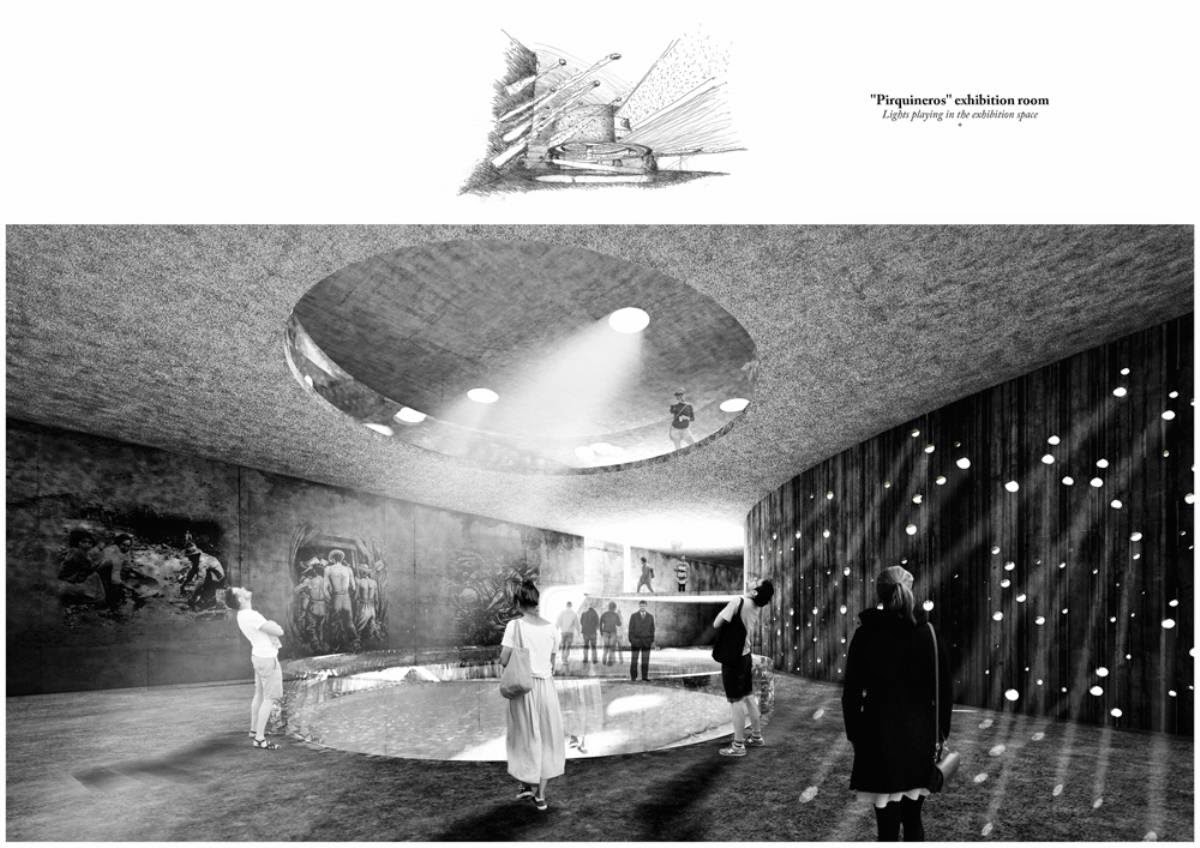 [Image: From “Mining Cenotaph” by Alexis Quinteros Salazar; courtesy of the RIBA President’s Medals].
[Image: From “Mining Cenotaph” by Alexis Quinteros Salazar; courtesy of the RIBA President’s Medals].
—while the roof is a recreational space for visitors.
Of course, there are a lot of unanswered questions here—including the control of aerosol pollution from the tailings pile itself and that pile’s own long-term structural stability—but the poetic gesture of a public museum grafted into a pile of waste material is worth commending.
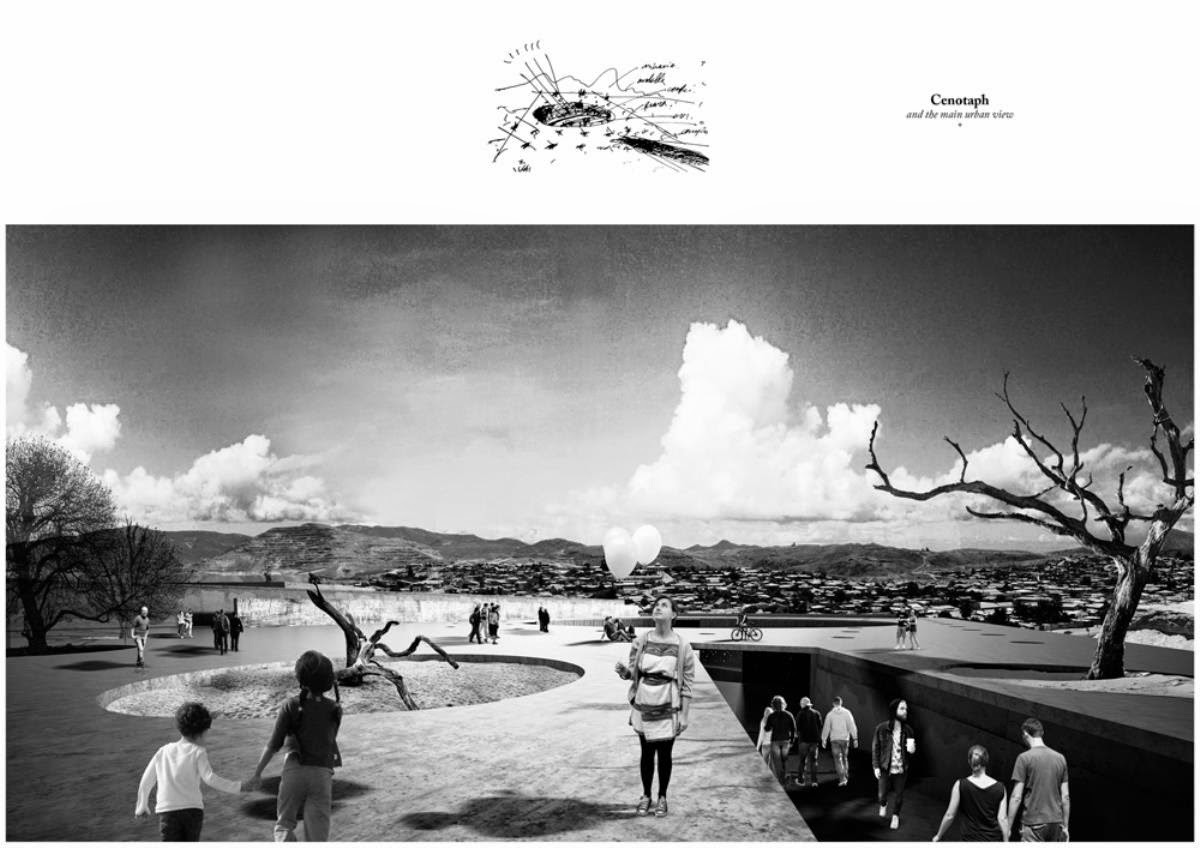 [Image: From “Mining Cenotaph” by Alexis Quinteros Salazar; courtesy of the RIBA President’s Medals].
[Image: From “Mining Cenotaph” by Alexis Quinteros Salazar; courtesy of the RIBA President’s Medals].
The detail I might like this most is where the structure becomes a kind of inversion of Boullée’s dome, which was pierced to make its huge interior space appear illuminated from above by constellations. Here, instead, it is the perforations in the the rooftop that would glow upward from below, as if in resonance with the night skies high above.
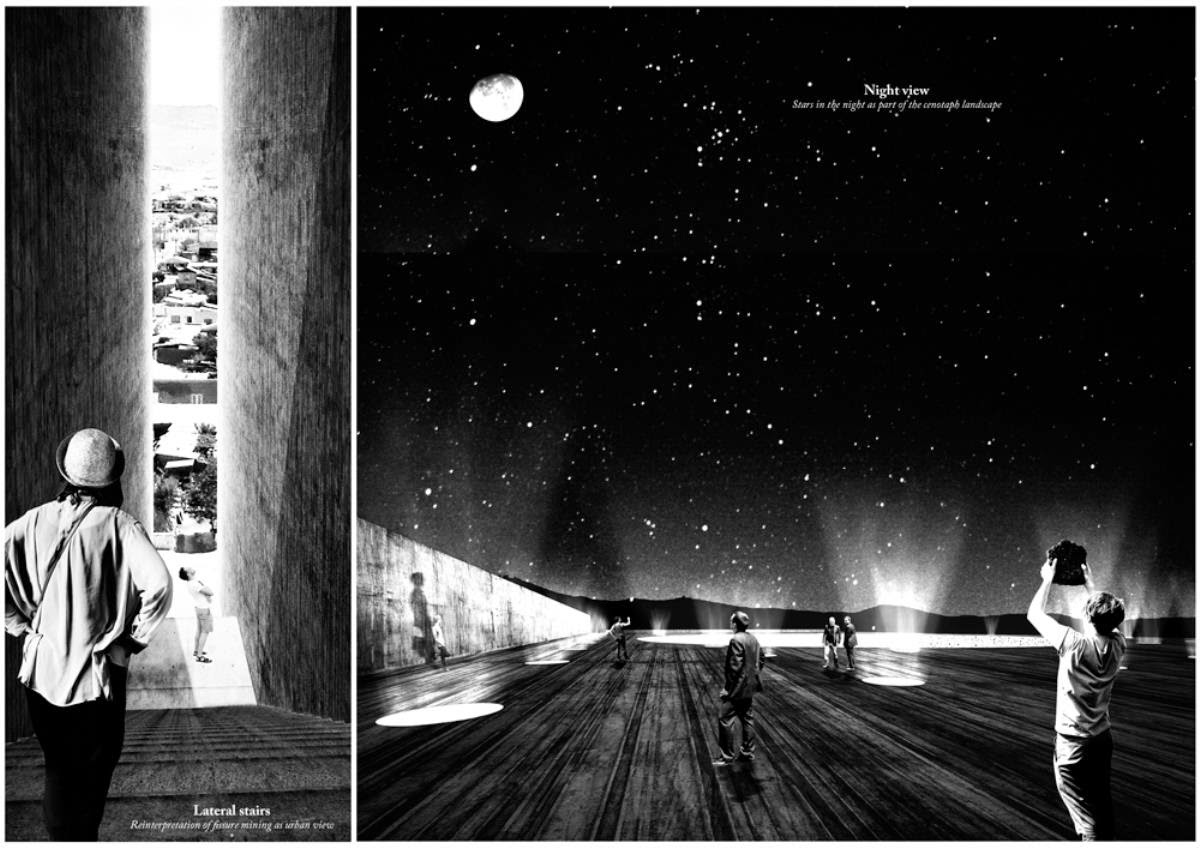 [Image: From “Mining Cenotaph” by Alexis Quinteros Salazar; courtesy of the RIBA President’s Medals].
[Image: From “Mining Cenotaph” by Alexis Quinteros Salazar; courtesy of the RIBA President’s Medals].
Salazar’s project brings to mind a few other proposals seen here over the years, including the extraordinary “Memorial to a Buried Village” by Bo Li and Ge Men, as well as Brandon Mosley’s “Mine Plug” (which actually took its name retroactively from that BLDGBLOG post).
Click through to see slightly larger versions of the images over at the RIBA President’s Medals website.
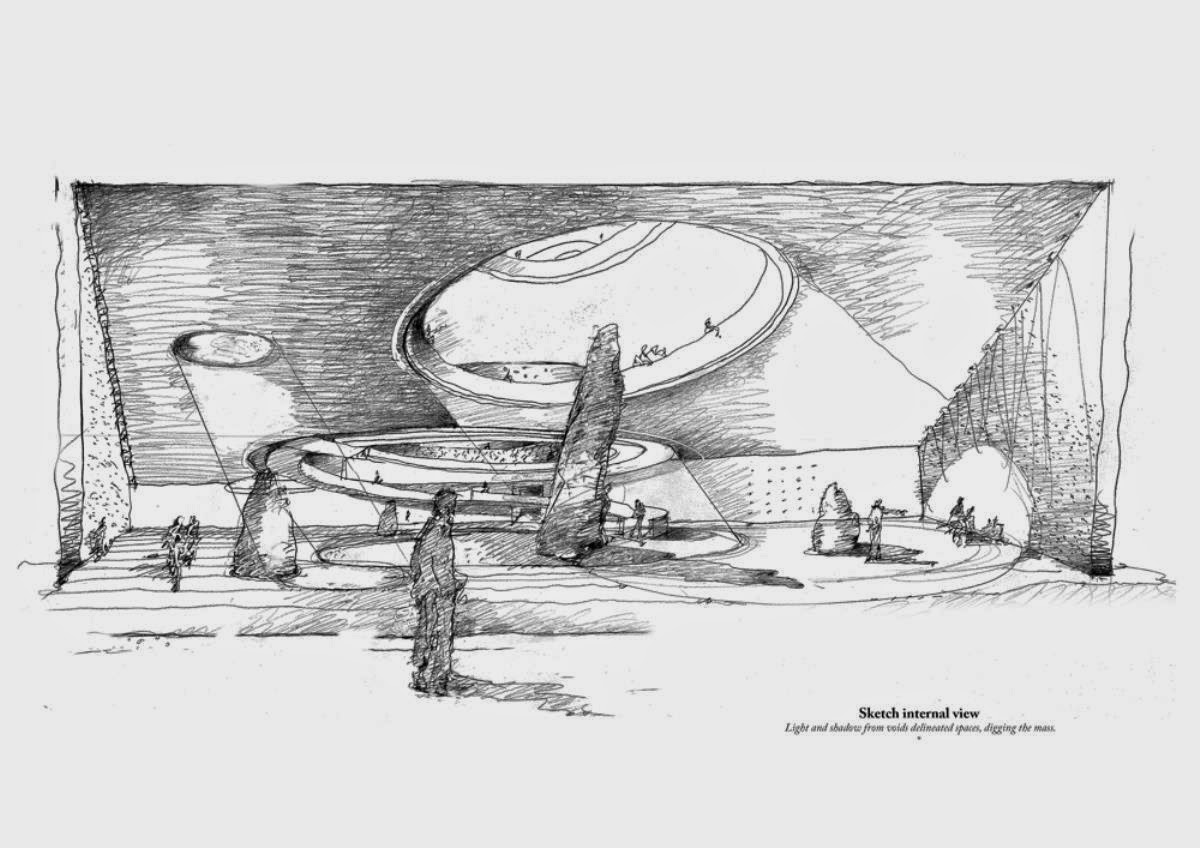 [Image: From “Mining Cenotaph” by Alexis Quinteros Salazar; courtesy of the RIBA President’s Medals].
[Image: From “Mining Cenotaph” by Alexis Quinteros Salazar; courtesy of the RIBA President’s Medals].
Finally, don’t miss the Brooklyn food co-op posted earlier, also a recent President’s Medal featured project.
The Museum At The Bottom Of The Sea
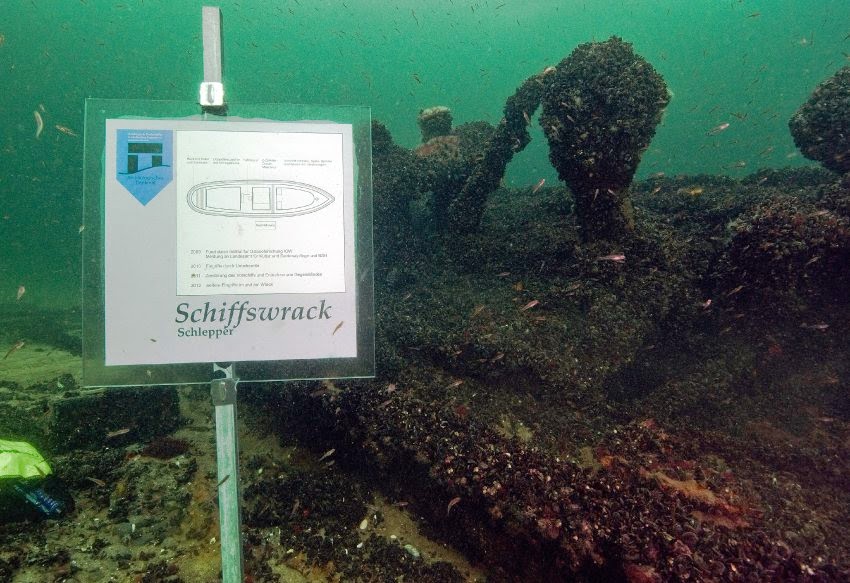 [Image: Photo by Martin Siegel/Society of Maritime Archaeology, via Der Spiegel].
[Image: Photo by Martin Siegel/Society of Maritime Archaeology, via Der Spiegel].
In 2012, German archaeologists began posting interpretive signs underwater, marking shipwrecks and even crashed airplanes at the bottom of the Baltic Sea as if they are in a museum, in order to make it clear to potential vandals, reckless tourists, and amateur collectors that these are culturally important sites, worthy of preservation.
“Alarmed at the looting of historically valuable shipwrecks in the Baltic Sea,” Der Spiegel reported at the time, “German archaeologists have started attaching underwater signs designating them as protected monuments. Hobby divers and trophy hunters are damaging a precious maritime legacy stretching back thousands of years, they warn.”
The sunken ship seen in the above image, for example, is just one of “some 1,500 marine monuments strewn across the seabed along the coast. The area has a wealth of well-preserved shipwrecks, lost cargo planes and even ancient settlements submerged through subsidence and rising water levels.” That these can be described as monuments is very important: they are not mere wreckage, scattered over the seabed, but artifacts on display for those who can reach them.
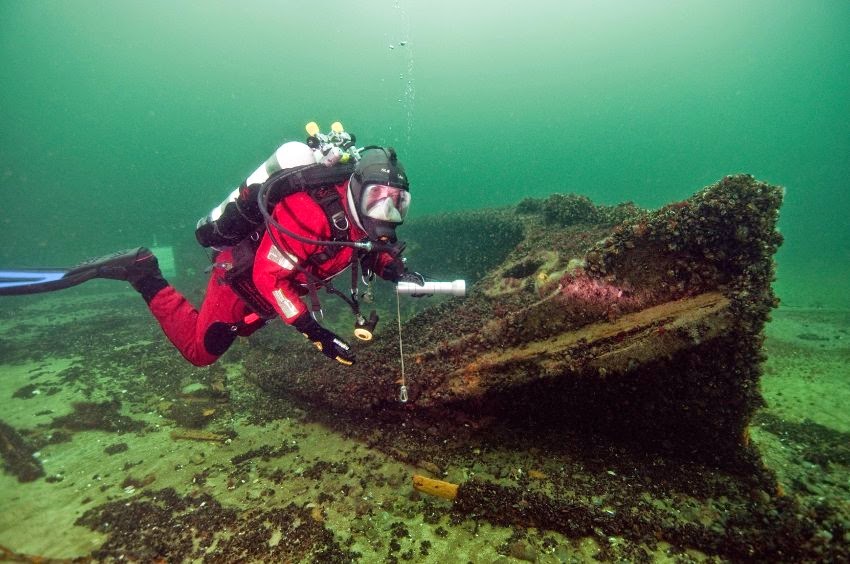 [Image: Photo by Martin Siegel/Society of Maritime Archaeology, via Der Spiegel].
[Image: Photo by Martin Siegel/Society of Maritime Archaeology, via Der Spiegel].
The effect is strangely evocative, as if an architectural experiment has been going on beneath the waves of the Baltic Sea for the last few years, in which a museum, entirely without walls and seemingly with only very few visitors, has been secretly installed and constructed. It is a distributed, nonlinear museum of European ruins barely visible in the rising sea.
What’s so interesting from an architectural standpoint, however, is how a group of signs such as these can have such a huge narrative and spatial effect, as if you’ve entered some sort of undefined volumetric space without walls, hidden in the water all around you, a kind of invisible cultural institution stocked with objects that only you and your fellow divers, at that exact moment, can even see.
In fact, it makes me curious how the (totally brilliant and BLDGBLOG-supported) idea of creating a new National Park on the moon might work—and, more to the point, what such a park would really look like. Do we just post a few signs on the lunar surface indicating that historically important artifacts are present up ahead, or do we actually construct some sort of “museum” space there that would more adequately sustain an aura of cultural history?
Either way, it’s both hilarious and deeply strange that we could begin to experiment with what such a park might look like using—of all things—shipwrecks at the bottom of the Baltic Sea, and that German archaeologists, randomly posting cheap signs on the seabed, might have anticipated future strategies of historic preservation in otherwise deeply unearthly situations.

